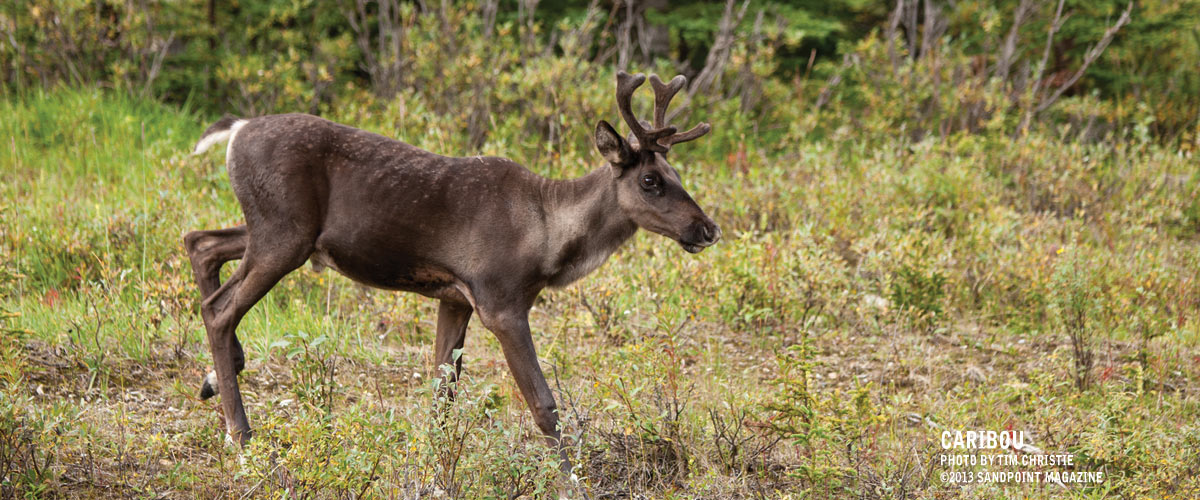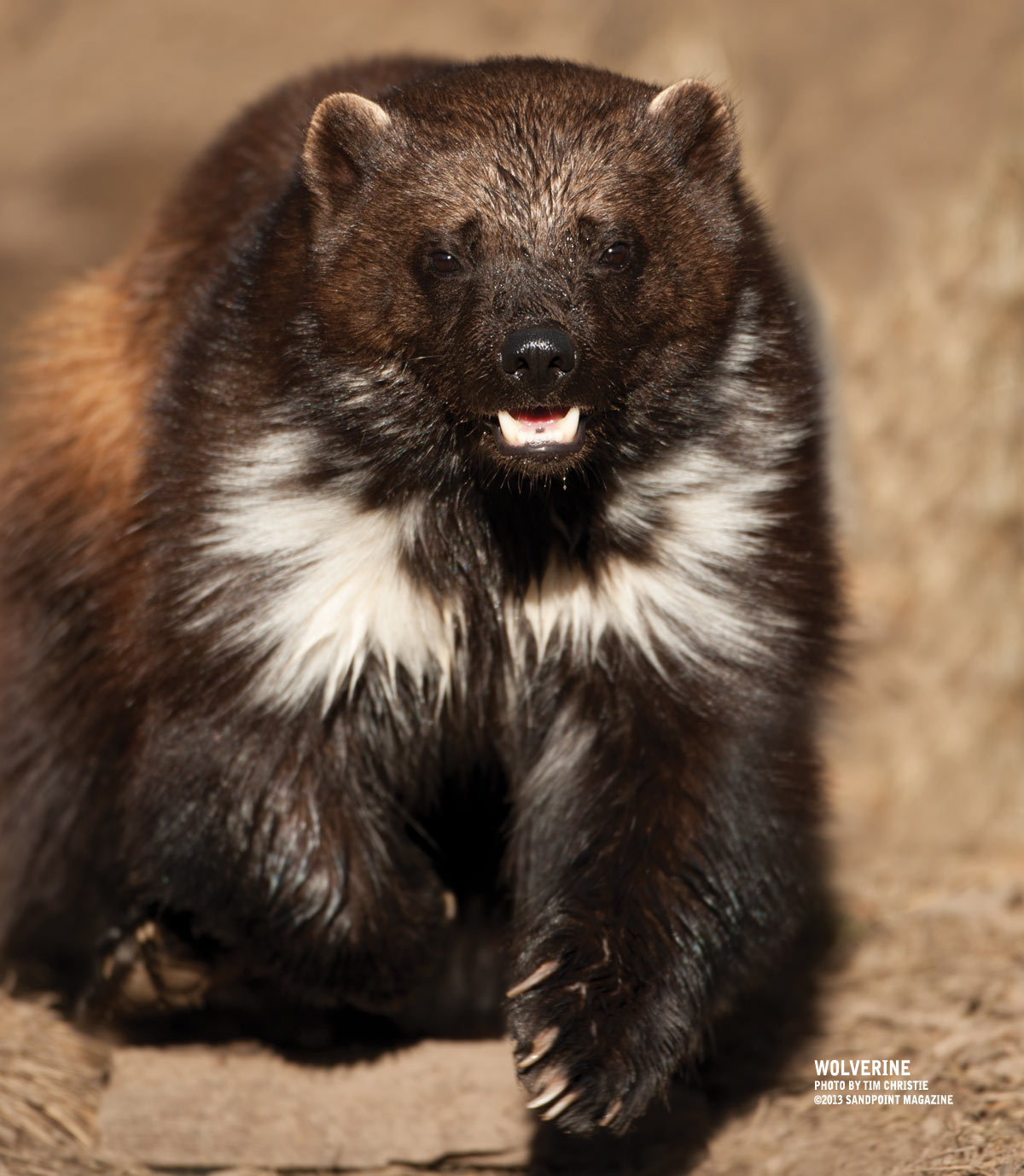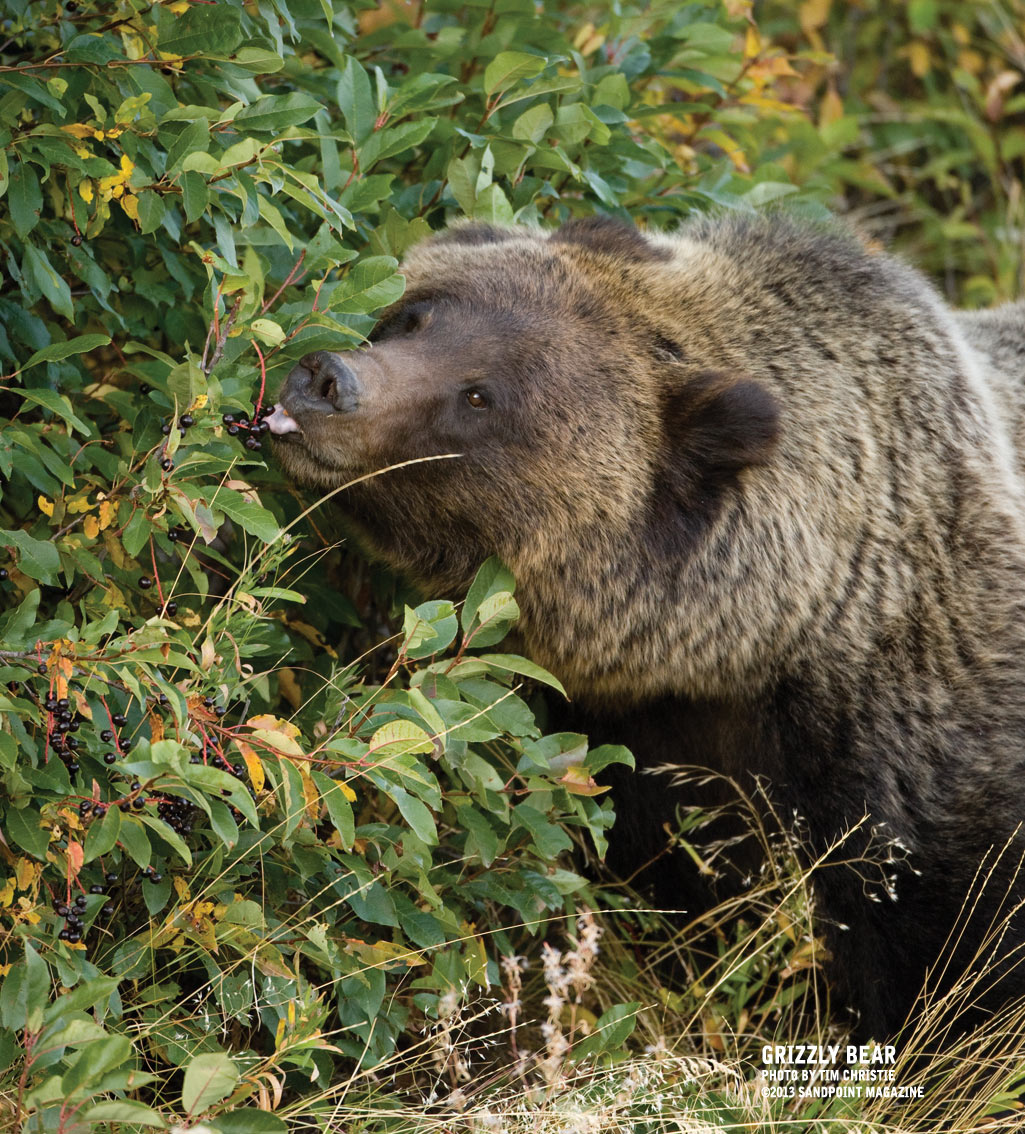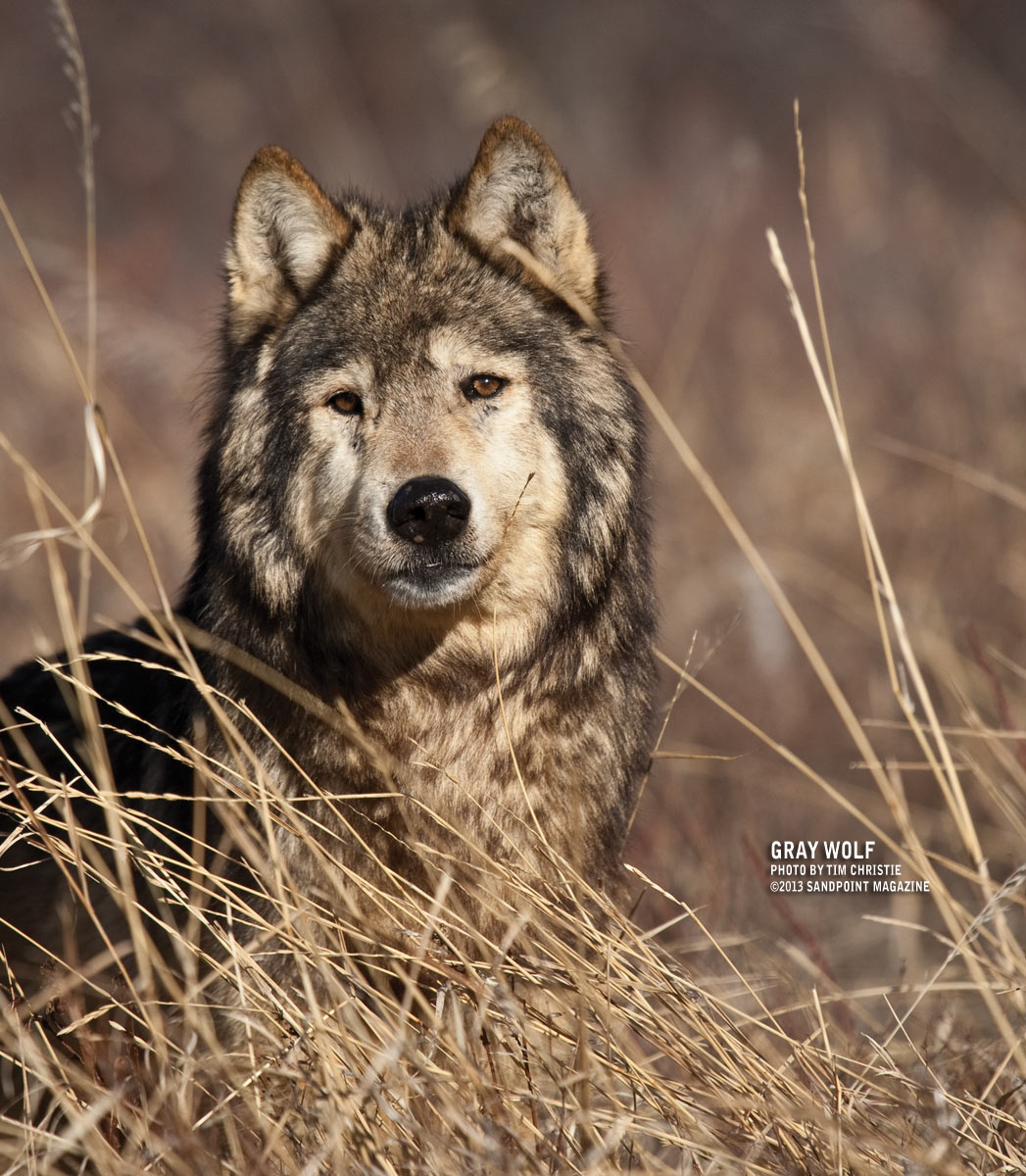Rare animals rarely seen
From the Summer 2012 Issue
Story by Cate Huisman
Photos by Tim Christie
In 1888, when Teddy Roosevelt shot the caribou whose antlers hung for years in a bar in Bonners Ferry, herds of these animals were taken for granted across the northern tier of the United States. Now they are extremely rare, and, as with other uncommon animals, they survive here only because the northern panhandle has some of the last large stretches of wild, uninhabited land in the Lower 48. Human inhabitants may come here because they treasure this wildness and the freedom it engenders, but these animals live here because they depend on it. Rarely do they make their presence known to humans.
One such elusive inhabitant is the wolverine, an animal much studied the past two winters by Idaho Fish and Game with assistance from Friends of Scotchman Peaks Wilderness and other volunteers. Wolverines have oversize, bear-like paws that enable them to travel with remarkable rapidity on snow. In fact, a wolverine named M3, involved in a study at nearby Glacier National Park a few years ago, has become famous among wolverine aficionados for climbing the 4,900 vertical feet to the summit of Mount Cleveland in 90 minutes.
Although they were once trapped for their fur, this is no longer legal in Idaho, and humans who have encountered them suggest that they will meet such interaction with fierce resistance. Wildlife educator and tracker Brian Baxter has live-trapped them for study, and he recalls one wolverine who made its attitude toward him clear as he approached the trap. “There was nothing but saliva and claws and a tenacious, serious, obvious, guttural warning,” said Baxter.
Wolverines don’t attack humans, although Baxter did decide to wait for assistance before he tranquilized and collared that one. They are, however, happy to go after unsecured human habitations when the humans aren’t around, and with their big claws, they are well-suited to tearing things apart. They also leave a smell behind that Ben Gadd, a Canadian naturalist, calls “Eau d’Unbearable.”
Equally elusive and also once prized for its fur is the Canada lynx, a rare mountain cat. Like wolverines, lynx rely on oversize feet to travel over snow; the lynx’s feet are as big as those of its distant cousin the mountain lion, a much more common animal two or three times its size. The same advantage applies to the snowshoe hare, which is the primary prey of the lynx; populations of these two species are closely tied to one another.
Lynx are similar to bobcats, but they are much less often seen.
“If you see something darting across the road and it moves like a house cat, it’s usually a bobcat,” said Baxter.
In contrast, the lynx has a stooped appearance and sometimes moves likes its favorite prey, with what Baxter called “almost a semi-bunny kind of jump.” It also has distinctive ear tufts, wisps of dark fur that stick straight up off the tips of its ears. The function of these tufts is unknown, although Baxter said there are several theories about them: They might have something to do with providing camouflage, sensing wind direction, locating prey, or making the animal look more intimidating.
The remnants of the woodland caribou herds that Teddy Roosevelt hunted survive only at the northernmost edge of the panhandle. Like the other survivor species, they have large feet – famously large, snowshoe-like hooves that enable them to navigate over snow in winter to eat the lichens off trees.
They were so common at the time Roosevelt visited that early European settlers depended on them for food, and a prospector named Billy Houston counted on them for even more: He is said to have spent the winter of 1891-92 high in the Selkirks, guarding his mining claim while camped in a caribou-hide shelter, clad in caribou-hide clothing, and eating – as the last of his supplies gave out – nothing but caribou meat.
Currently the herd includes only 20 to 35 animals that range back and forth across the border between the United States and Canada near Stagleap Pass. Efforts to enlarge this herd in the 1980s met with mixed success, and a 20-year moratorium on harvesting old growth to provide a “recovery zone” for them did not endear them to local loggers. More recently, designation of critical habitat for caribou has led to the closure of snowmobiling areas around Priest Lake, and this hasn’t made snowmobilers any happier than the loggers were. Efforts to resolve the resulting impasse are ongoing.
Perhaps the most famous of northern Idaho’s rare, wild animals is the grizzly bear. Larger than the far more ubiquitous black bear, the grizzly’s fur color varies, while white tips at the ends of each hair give it its grizzly appearance. Its footprints are alarmingly huge, but grizzly bears themselves are large animals, ranging up to 800 pounds for the largest males. In the last year or two, grizzlies here and elsewhere have had a few unfortunate interactions with humans.
“Most of the time they don’t want anything to do with people,” said Brian Johnson, an Idaho Fish and Game habitat biologist.
They sit at the top of the food chain and, like wolverines, are “opportunistic omnivores.”
“Our bears are primarily huckleberry bears,” Johnson said. “Ninety percent of a north Idaho bear’s diet is plant matter, and when we get a bad huckleberry year, that’s when we have a lot of bear problems.”
Grizzlies were hunted almost to extinction before they were designated a threatened species in 1975. Since then, their numbers have been slowly growing, but humans still rarely encounter them. Hikers in late summer and fall are far more likely to come across piles of what bears have left behind, and these piles provide ample evidence of the grizzly’s fondness for huckleberries.
If the grizzly is the most famous of rare panhandle residents, the gray wolf is perhaps the most infamous. These animals once roamed most of North America, but they preyed on livestock and were almost completely eradicated in the 20th century.
“The wolf is the king of long-distance travel,” said Johnson. “They can travel hundreds of miles to find a new pack and a new territory.”
Wolves wearing radio collars have gone from Alberta to Colorado and from Boise to Saskatchewan. In an attempt to protect them from extinction, wolves were reintroduced in central Idaho in 1995. Because they are such great travelers, and because “they crank out a lot of puppies,” as Johnson put it, they have spread widely and successfully, including into the northern panhandle. It is legal to hunt wolves in Idaho now, and Johnson said their population has stabilized.
Even though wolves are no longer considered rare, human visitors aren’t likely to see them. Humans might see the scat – like a dog’s but full of hair from the wolf’s prey. And they might see tracks. Wolves have very large feet – a typical 90-pound male leaves a dog-like track, but it’s closer to the size of a small human hand.
Like the gray wolf, which can be said to be rare most everywhere but here, the bull trout has been eradicated from most of North America but flourishes in Lake Pend Oreille and its tributaries. “When we talk about bull trout, we talk about water quality,” said Tom Whalen, Idaho Fish and Game senior conservation officer.
Bull trout flourish in our lake because our water is so pure.
Mining pioneer A.K. Klockmann wrote in his diary that near the turn of the last century he caught a “char” so big that when the fish was slung over his buddy’s shoulder, its tail dragged on the ground. Klockmann also wrote, “I have regretted ever since that we did not take the time to skin him and have him stuffed.” Whalen believes this was likely a bull trout, but in the absence of any record of the catch, the bull trout that now holds the world record is a 32-pounder, caught in Lake Pend Oreille in 1949.
Bull trout are featured on the Bridge Street pedestrian bridge; they’re the steel fish with the pink glass spots attached to the railing. These fish are part of Whalen’s public education efforts; he enlisted the help of students in Yogi Vasquez’s welding class at Sandpoint High School to cut the fish and arranged with local glass artists Bryan and Zabrielle Dillon to make the spots.
Such artwork, along with a plethora of stories and photos and historic records, show that the human population of the panhandle values these rare fellow residents. Keeping them as neighbors will continue to require planning and effort, and even some small sacrifices of our own freedom to roam the wilderness. You can bet that they hope we think it’s worth it.








what Alaska cities have no bears other than Sand Point?I am looking for places to visit, but I hate big bears. I am afraid of them
Hi Toni,
our Sandpoint Magazine is based out of Sandpoint, Idaho. Sandpoint is a wonderful place to visit. You’re welcome to read our online edition to see for yourself. Here’s our latest issue http://sandpointmagazine.com/issue/winter-2017/ .
I like how you can kill wolverines.and that it was a law but it is fine with me.